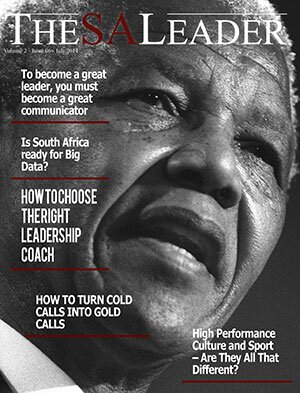Many of us in business – and in life – play leadership roles. But what should leaders be doing? And how can you become a better leader? Eleanor Scott shares her advice.
The first step to becoming a better leader is to have a clear understanding of what a leader embodies. My definition of a leader is: “A person out in front - influencing and paving the way for others to first follow, and then imitate.”
Author, speaker and pastor John Maxwell puts this another way. He says: “A leader is one who knows the way, goes the way, and shows the way.”
If we break this down and start with ‘knowing the way’, it is obvious that leaders need to know the way to some ‘new’ destination. One of the key characteristics of a leader is vision. They need to have a picture of the future that’s different from the present and the past. In short – a picture of what you are working towards but don’t yet have.
For this picture to be compelling enough to stimulate changed thinking and behaviour it needs to embrace all your senses and answer these questions: “What does this future look like, sound like and feel like?” What will I be saying when this picture is realized and what will others be saying to me. For example, if your goal is to “get fit in 2014”, think about what this means to you. What do you look like when you are fit, how much do you weigh, what can you do (actions) when you are fit. How will you feel when you are fit – what emotions will you have, what will you hear people saying to you and about you when you are fit and most important - what will you be saying to yourself?
The next step toward realizing your vision as a leader is to think about where you are now and then determine for yourself what the gap is between where you are now and where you want to be within a certain time-frame. This will help you decide what actions you need to take in order to get you to this new future. Work out specific, measurable, actions that will be relevant to you in order to achieve your desired outcome within your time-frame. To return to our fitness example, it could be committing to running two kilometres every day for the next month.
Leaders also possess the ability to demonstrate and model the behaviour required to get to their vision – showing the way for others to imitate and follow. As mentioned earlier leaders lead others towards a defined ‘new’ destination (vision) and if they don’t have vision and purpose for their own lives they will not effectively lead others towards their desired vision. In essence – you cannot give what you do not have.
Another essential characteristic for effective leadership is above average communication skills, not just speaking but rather receiving and giving feedback in light of where you are going – your vision.
Subscribe content preview
To continue reading: Log-In above or Subscribe now.
Want the full story?

SUBSCRIBE NOW
Get The SA Leader the way you want it
- One Year Digital Subscription - R320
- 10 Issues Print Subscription - R580
- One Year All Access - Just R900 Best Deal!
Print Magazine + Digital Edition + Subscriber-only content on SALeader.co.za
If you are already a subscriber, please Log-In using the Log-In button found on the top right of the site!
















